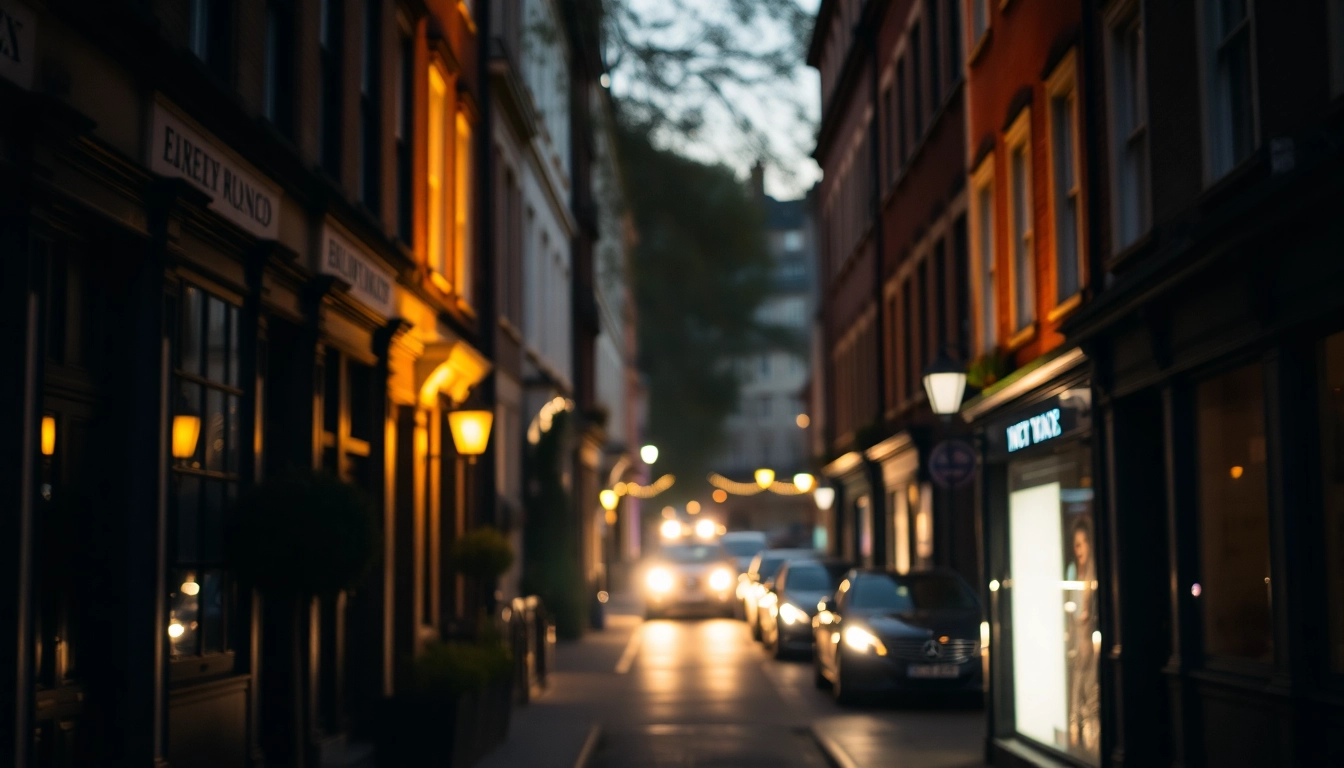Introduction to Bloomsbury’s Cultural Legacy
Bloomsbury, an area in London renowned for its rich intellectual heritage and cultural significance, has continually captured the imagination of locals and visitors alike. This district is a jewel, overflowing with historical sites, renowned figures, and a vibrant arts scene that pulsates through its streets. The cultural legacy of bloomsbury continues to influence literature, art, and academia, making it a must-visit destination for those seeking to understand the artistic currents that have shaped modern Britain.
Historical Significance of Bloomsbury
Bloomsbury’s history is interwoven with narratives of transformation and upheaval. Emerging in the 17th century as a fashionable residential area, it evolved substantially over the centuries. Its development coincided with the rise of the British intellectual elite, particularly during the 19th and early 20th centuries. Bloomsbury became synonymous with the Bloomsbury Group, a collective of writers, intellectuals, and artists, including Virginia Woolf and E.M. Forster, who challenged societal norms and fostered a spirit of innovation.
The area’s historical significance is exemplified by its exquisite Georgian architecture, which not only defines its aesthetic but also its social history. The District has been a meeting point for progressive thinkers, and its commitment to social reform left an indelible mark on British history.
Influential Figures Associated with Bloomsbury
As a hotbed of intellectual thought, Bloomsbury has been home to an array of influential figures. The Bloomsbury Group, consisting of notable literary icons such as Virginia Woolf, John Maynard Keynes, and Lytton Strachey, significantly impacted the cultural landscape of the 20th century.
Virginia Woolf’s works, particularly her novels and essays, fostered modern narrative techniques and themes that still resonate in contemporary literature. Similarly, the economic theories developed by Keynes continue to influence policymakers worldwide. Their legacies, along with those of other writers and thinkers associated with Bloomsbury, continue to inspire countless individuals interested in literature, psychology, and economics.
Overview of Modern Bloomsbury
Today, Bloomsbury is both a historical landmark and a vibrant community that embraces its past while looking toward the future. The influences of its storied intellectual traditions can be seen in the numerous museums, galleries, and educational institutions that dot the landscape. It retains its status as a cultural hub, where the echoes of past thinkers intermingle with the voices of contemporary artists and writers.
Modern Bloomsbury boasts a diverse community, fostering a melting pot of ideas, cuisines, and cultures. From bustling markets to quiet bookstores, visitors can immerse themselves in a unique blend of history and modernity, ensuring that those who explore its streets leave with a heightened appreciation for its cultural legacy.
Must-Visit Attractions in Bloomsbury
Top Museums and Galleries to Explore
Bloomsbury is home to some of London’s most significant cultural institutions. Visitors can delve into a world of knowledge and art at the British Museum, which houses an astonishing collection of artifacts spanning thousands of years. With highlights like the Rosetta Stone and the Elgin Marbles, it is a focal point for world history and culture.
In addition to the British Museum, the area hosts the Charles Dickens Museum, located in the author’s former residence, where fans can walk through the rooms where Dickens lived and worked. The museum showcases a plethora of his personal belongings, manuscripts, and letters, providing insight into the life of one of England’s most beloved authors.
Hidden Gems and Local Favorites
Apart from its renowned institutions, Bloomsbury is filled with hidden gems waiting to be discovered. One such treasure is the Foundling Museum, dedicated to the first home for abandoned children in London. The museum offers a poignant exploration of the history of the Foundling Hospital and its founder, the composer Thomas Coram.
Another local favorite is the beautiful and serene Russell Square, a public garden that serves as a perfect oasis from the hustle and bustle of city life. It’s not only a wonderful place to relax with a book but also hosts various events and festivals throughout the year, showcasing the vibrant culture of Bloomsbury.
Architectural Wonders of Bloomsbury
The architectural landscape of Bloomsbury offers a fascinating glimpse into London’s historical fabric. The stunning Georgian terraces that line the streets are complemented by neoclassical structures like the British Museum, showcasing elegance and grandeur. Notable architectural features include the elaborate St. George’s Church, a striking example of the period that combines beauty with historical significance.
The area around Bloomsbury is also celebrated for its academic architecture, including the iconic University College London and the nearby Institute of Education, which reflect the district’s commitment to education and research. These institutions not only contribute to the academic landscape but also enhance the picturesque setting of Bloomsbury.
Culinary Experiences: Dining in Bloomsbury
Best Local Eateries and Cafés
The culinary scene in Bloomsbury is as diverse as its cultural offerings. From cozy cafés serving artisanal coffee to sophisticated restaurants featuring gourmet cuisine, there is something to tantalize every palate. A standout is the atmospheric Dishoom, a Bombay-style café that delights diners with its mouth-watering Indian dishes in a spectacular setting inspired by the Irani cafés of Mumbai.
Additionally, the charming Bloomsbury Coffee House offers a range of homemade pastries, sandwiches, and excellent coffee, making it a perfect spot for a light meal or afternoon tea. Visitors can soak in the ambiance while savoring locally sourced ingredients that highlight the area’s culinary ethos.
Must-Try Dishes in Bloomsbury
When dining in Bloomsbury, certain dishes are almost mandatory to try. One local favorite is the traditional British breakfast, best experienced at one of the area’s many brunch spots. This hearty meal typically includes eggs, bacon, sausage, baked beans, and toast, representing quintessential British fare.
For something less traditional, try the infamous street food found in the many markets around Bloomsbury. From dumplings to gourmet burgers, the variety available is a reflection of London’s multicultural population and culinary innovation.
Food Tours and Culinary Events
Beyond individual restaurants, food tours offer an excellent way to discover Bloomsbury’s diverse culinary landscape. Guided tours often include visits to multiple eateries, tastings of various dishes, and insights into the history of each culinary establishment.
Additionally, Bloomsbury hosts several food festivals throughout the year, celebrating local cuisine and culture. Such events often feature street food stalls, live cooking demonstrations, and workshops, making them an ideal opportunity for food enthusiasts to engage with the culinary community.
Events and Festivals Celebrated in Bloomsbury
Annual Highlights and Cultural Celebrations
Bloomsbury is rich with annual events that showcase its vibrant culture. The Bloomsbury Festival, held every October, is a highlight, offering a plethora of activities including street performances, workshops, and art installations. This celebration of creativity invites both locals and tourists to participate, making it a community-driven event that highlights the spirit of Bloomsbury.
Art and Literature Festivals
The literary legacy of Bloomsbury is celebrated through various events focused on books and authors. The Bloomsbury Readers’ Festival brings together authors, poets, and literature lovers for discussions, readings, and signings that honor the area’s rich literary heritage. These festivals create opportunities for aspiring writers and avid readers to connect, fostering a sense of community around literature.
Community Engagement Events
Beyond art and literature, community engagement events thrive in Bloomsbury. Local markets, fairs, and charity events are often organized to encourage social interactions and support local artisans and businesses. These events contribute to a strong sense of community, where residents come together to celebrate their heritage and share experiences.
Exploring Bloomsbury: Tips for Visitors
Best Times to Visit Bloomsbury
Understanding when to visit Bloomsbury can greatly enhance your experience. Spring and early autumn are ideal times due to mild weather, making it perfect for strolling through the area’s parks and gardens. Furthermore, visiting during the Bloomsbury Festival or art exhibitions allows tourists to immerse themselves in the cultural vibrancy of the area.
Transportation and Accessibility Options
Getting to Bloomsbury is straightforward, thanks to its central location and robust public transport system. The area is well-served by several tube stations including Russell Square and Holborn, facilitating easy access from various parts of London. For those who prefer to walk or cycle, the streets are pedestrian-friendly and typically bustling with activity.
Accommodation Choices in Bloomsbury
Accommodation in Bloomsbury ranges from luxury hotels to budget-friendly hostels. For travelers seeking an immersive experience, boutique hotels situated in historic buildings offer a taste of the area’s rich heritage. The Bloomsbury Residence stands out, providing elegant accommodations with easy access to local attractions.
Additionally, various guesthouses and Airbnb options cater to diverse travel preferences, ensuring that visitors can find suitable lodging that enhances their stay in this culturally rich area.



